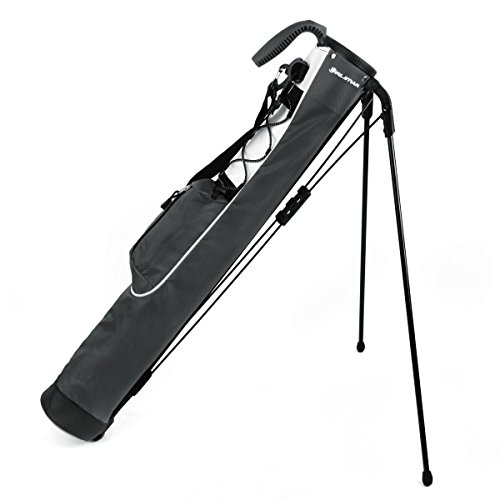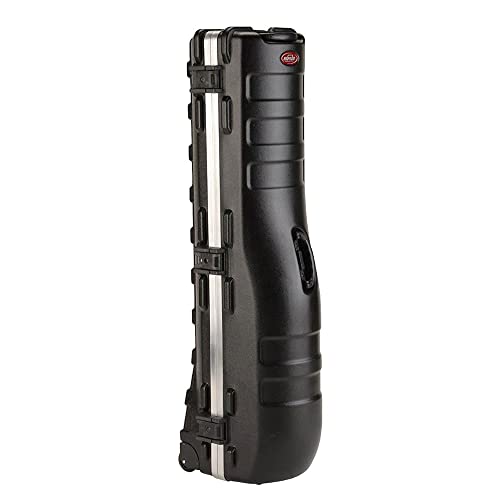How Golf Bags are Made?
Golf bags are crafted through a multi-step manufacturing process, primarily involving material cutting, sewing, and assembly. High-quality textiles, leather, or synthetic materials are used to ensure durability and functionality.
Golf is more than just a sport; it’s a passion that requires proper gear, especially a durable and convenient golf bag. The journey of creating a golf bag begins with the careful selection of materials designed to withstand various outdoor conditions and carry hefty clubs.
Expert craftsmen then meticulously cut and shape these materials into panels. These panels are sewn together, often with reinforced stitching to hold the weight of golf clubs and accessories. Features such as straps, pockets, and stands are added, each playing a role in the bag’s usability and comfort.
The focus on functionality, ergonomics, and style culminates in a golf bag that meets the needs of every golfer, from amateurs to seasoned pros. As players traverse from hole to hole, their trusty golf bag, produced with skill and precision, becomes an essential part of their game.
The Evolution Of Golf Bags

The craftsmanship of golf bags has transformed dramatically over the years. Early golf bags were simple leather pouches, adequate for holding a few golf clubs. Today, they are high-tech carriers equipped with advanced features like built-in stands, ergonomic straps, and weatherproof pockets.
Professional golfers have greatly influenced this evolution. Their need for durability, functionality, and comfort has pushed manufacturers to innovate. Features like lightweight materials and adjustable weight distribution cater to their demands. Such details ensure bags meet the rigors of professional play.
| Time Period | Material Used | Notable Features |
|---|---|---|
| Early days of golf | Leather | Simple pouch |
| Modern era | Advanced synthetics | Ergonomic, weatherproof |
Key Materials In Golf Bag Construction
Golf bags are crafted using various durable materials. Among these, nylon, polyester, and leather are the most common. Nylon is known for its resilience and light weight, making it a perfect choice for those who prefer easy-to-carry bags. Polyester, on the other hand, offers enhanced water resistance and durability, ideal for golfers who play in different weather conditions. Leather options exude a classic look and are highly valued for their longevity and style.
Technological advancements have led to the incorporation of innovative lightweight metals and plastics. These materials contribute to the overall structure and stability of the golf bags while keeping them light and easy to manage. The use of aluminum or carbon fibers adds to the bag’s strength without weighing it down, enabling golfers to carry more gear with less effort.
Designing For The Modern Golfer

Golf bags are tailored for ease of use and comfort. Designers focus on weight distribution and shoulder strap positioning to minimize strain. Multiple pockets and padded sections protect gear and provide quick access. Adjustable straps and built-in stands offer various carrying options.
Custom features like color choices, embroidery, and clip-on accessories reflect personal style. Golfers can match bags to their clubs or shoes. Smart compartments store phones and sunglasses. Modern golfer needs are at the center of design.
Manufacturing Processes
The process of creating a golf bag begins with cutting and stitching fabric. Durable materials like nylon or polyester are common choices. Precise cutting ensures pieces fit together perfectly. Skilled workers operate sewing machines to stitch the fabric. This forms the bag’s body.
Assembling components and accessories is next. Zippers, straps, and pockets are attached. Often, this includes waterproof and padded compartments. Manufacturers focus on quality and durability during assembly. This ensures the bag can carry clubs securely. All parts are inspected thoroughly.
Innovations In Golf Bag Technology
Waterproofing has changed how golfers play in wet weather. Golf bags now use high-tech materials to stay dry. These materials, like tarpaulin and sealed zippers, prevent water from getting in. This means your clubs and gear are safe even in the rain.
Durability improvements mean bags last longer. Heavy-duty fabrics resist tears and damage. They also stand up to the sun’s harsh rays. This keeps the bag looking new, year after year.
Smart features like integrated electronics make golf easier. Some bags come with built-in GPS. This helps golfers know the distance to the hole without extra gadgets. Controlling these features is simple, often just pushing a button on the bag.
Sustainability In Golf Bag Production
Sustainability in golf bag production now prioritizes eco-friendly practices. Manufacturers are shifting towards materials that are less harmful to our planet. Recycled materials are key components in modern golf bags. Things like recycled plastic, rubber, and even old fishing nets see new life on the links.
Golf bag creators also focus on processes that lower carbon emissions. One approach is local sourcing. This means they get materials from nearby places. Shorter travel distances for materials mean fewer carbon emissions. Factories use renewable energy, like solar or wind power. This helps in reducing the overall carbon footprint of production.
Frequently Asked Questions Of How Golf Bags Are Made
What Materials Are Used In Golf Bags?
Golf bags typically utilize materials like nylon, canvas, and leather for durability and style. Manufacturers may also use plastic or metal for reinforcement and stability. These materials are chosen for their lightweight, robust, and weather-resistant properties.
How Long Does It Take To Make A Golf Bag?
The production time for a golf bag varies by manufacturer, but it typically takes several hours. The process involves design, cutting of materials, sewing, and adding features such as pockets and straps. Custom bags may take longer to complete.
Are Golf Bags Waterproof?
Many modern golf bags are designed with waterproof or water-resistant materials. Features like sealed zippers and tarpaulin reinforcements help keep gear dry. However, not all bags are fully waterproof, so it is essential to check the product specifications.
How Are Golf Bag Pockets Designed?
Golf bag pockets are designed for convenience and functionality. They are strategically placed and sized to store balls, tees, gloves, and other golf equipment. Some pockets are insulated for drinks, while others are lined with soft fabric to protect valuables.
FInal Thoughts
Crafting the perfect golf bag involves precision, care, and attention to detail. Manufacturers blend functionality with style to meet the needs of every golfer. From selecting durable materials to adding those personal touches, each bag is a testimony to the sport’s evolution.
Remember, the quality and craftsmanship behind your golf bag can truly enhance your game. Keep swinging in style!

Hi I am Fahad, the mastermind behind the bag revolution. Join me on a journey where style meets sustainability and discover a world of extraordinary bags.









